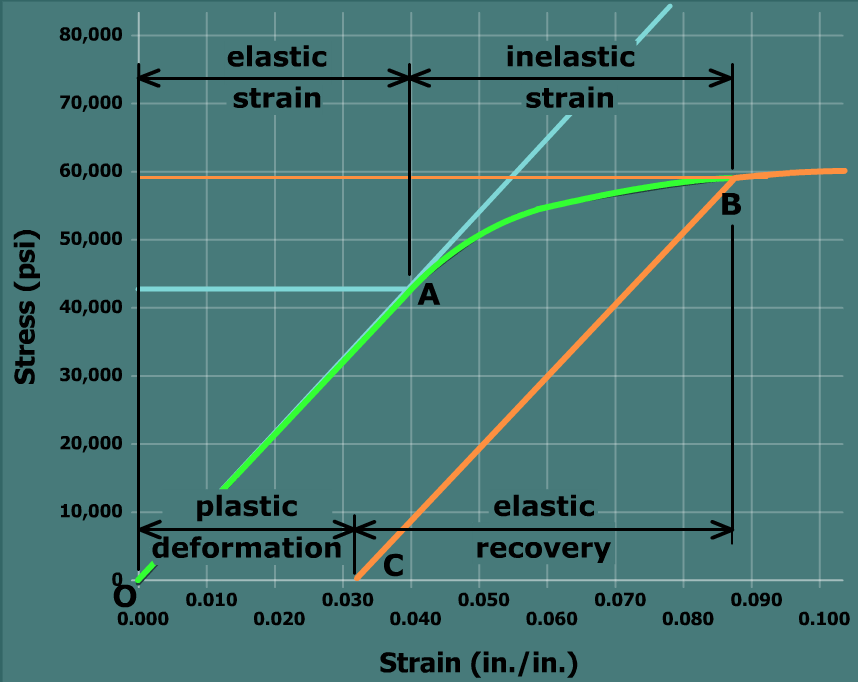
The proportional limit after reloading is now the stress at point , which is greater than that for the original loading (i.e., point ). This phenomenon is called work hardening.

The proportional limit after reloading is now the stress at point , which is greater than that for the original loading (i.e., point ). This phenomenon is called work hardening.